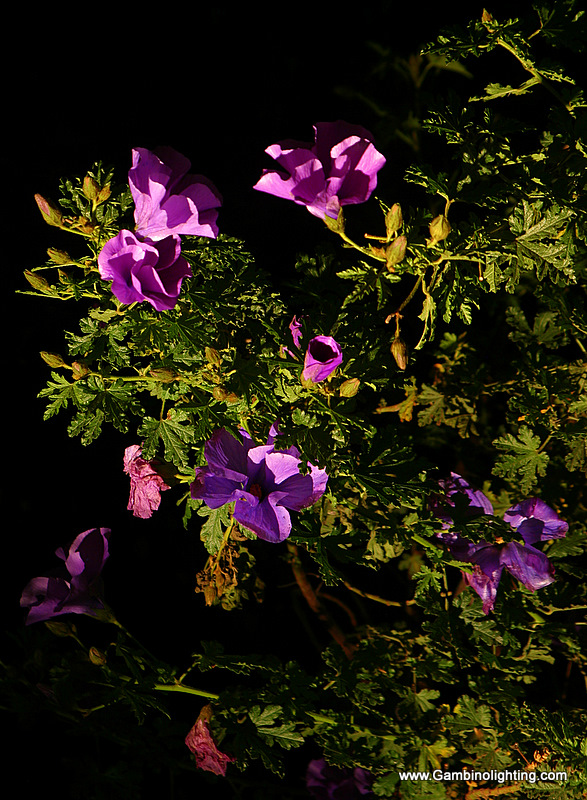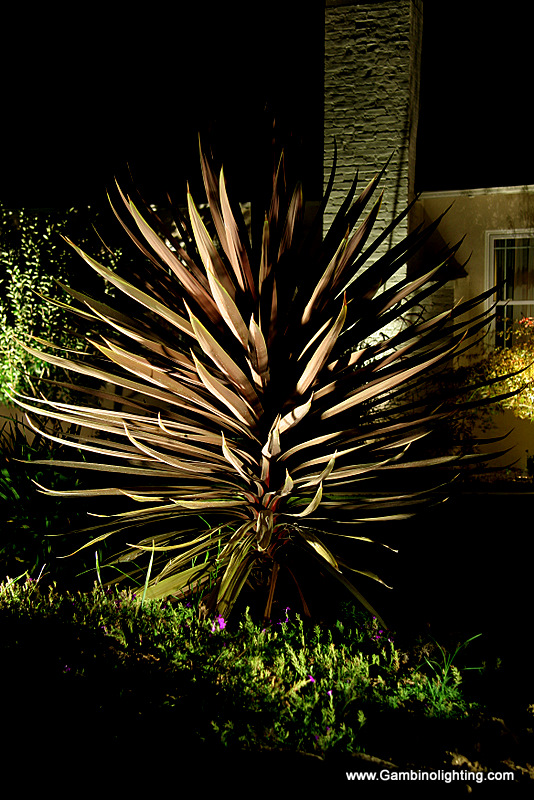15 Dec Optimizing light in your landscape
By Mike Gambino
 When designing an outdoor space it is essential to pay attention to the lighting. Both the quantity and quality of light can have a dramatic effect on how the space will appear after dark. Quantity is fairly simple, the more light you have the brighter the space. It also helps the space feel larger.
When designing an outdoor space it is essential to pay attention to the lighting. Both the quantity and quality of light can have a dramatic effect on how the space will appear after dark. Quantity is fairly simple, the more light you have the brighter the space. It also helps the space feel larger.
For example a garden with dim spotty lighting will be very dark and feel closed in and uninviting. The same garden with varying and appropriate levels of light will feel much less intimidating and gloomy. The quantity will be affected by how many fixtures and their light intensities and how much natural or unnatural ambient light you have available.
The quality of the lighting encompasses such factors as the color and intensity. Both artificial and natural ambient light from the moon can affect this. A classic example of different quality lights would be mood lighting as compared to spot lighting. A more subtle example is the effect that the direction that light comes from can have:
- Lights positioned overhead seem more natural since this is the position of the sun.
- Lights positioned straight overhead can seem flat or one dimensional and will have less dramatic shadows.
- Lights positioned at acute angles and or beams that cross each other tend to cover more space and reveal greater detail on subjects that are illuminated. Shadows can be more elongated and dramatic.
- Lights that are positioned behind a subject create silhouettes and leave the surface in darkness
- Lights coming from the ground can be very special and dramatic in that we are accustomed to natural light coming from above namely the sun.
Short of creating glare, there is no right or wrong when it comes to positioning of light fixtures per se. It all depends upon the theme, mood, effect and overall end result you are looking to achieve with your lighting system.
When deciding how to light a garden space you should consider its size and shape as well as the amount of natural light available. For example a square yard will have a different pattern of light and shadow compared to an L shaped or rectangular garden. In general the larger the garden space the more accent and ambient lighting you will need. Ambient lighting is the light we use just to see and perform standard tasks such as walking through the garden at night. It can easily be provided by indirect or bounced light from walls plant materials or with discrete fixtures mounted above in trees which filter down through leaves to somewhat mimic moonlight.
 Patios with outdoor kitchens or barbeques or work spaces will benefit from task lighting that allows specific tasks to be performed. For example if you like to read on the patio then having a bright task lamp overhead can be a huge help by providing light exactly where you need it.
Patios with outdoor kitchens or barbeques or work spaces will benefit from task lighting that allows specific tasks to be performed. For example if you like to read on the patio then having a bright task lamp overhead can be a huge help by providing light exactly where you need it.
A similar example are lights positioned so that they shine directly on your grill so that you can see what you are cooking.
The last type of lighting to consider is accent and mood lighting, which can be used to highlight artwork and other focal points. The typical example of this would be a small fixture in recess directly above or below a work of art or statue.
Candles burning can add interest and effect and a feeling of warmth to round out a beautifully illuminated garden.
This landscape lighting blog is published by Mike Gambino of Gambino landscape lighting inc. all rights reserved. Mike is a professional landscape lighting system designer/ builder and has been designing, installing and maintaining landscape lighting systems for more than 20 years. Mike resides in the Los Angeles area with his wife and 2 sons. To visit his website go to www.gambinolighting.com . To inquire about hiring Mike please click here .
Blog articles may be published with permission on other websites without editing or removing links.



No Comments